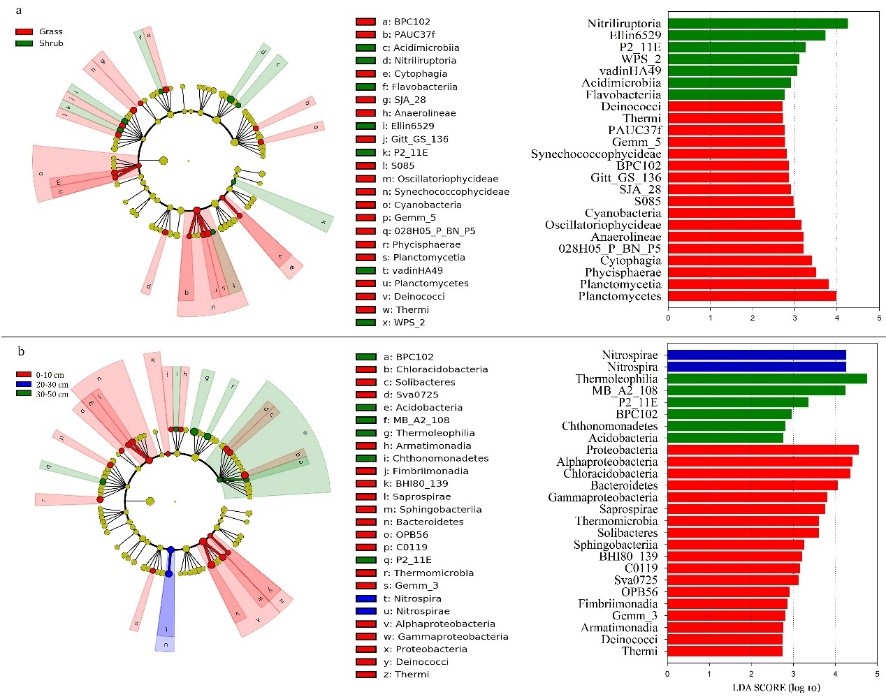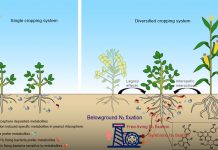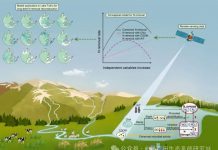由于全球气候变化,草原灌丛化在世界范围内广泛发生,并且具有越演越烈的趋势。目前,全球近10%-20%的干旱半干旱地区正经历草原灌丛化,而我国的内蒙古地区有近 510 万公顷草原发生灌丛化。中国科学院南京土壤研究所褚海燕课题组通过采集内蒙古草原灌丛化典型区域的土壤样品,利用Illumina Miseq高通量测序技术研究了草原灌丛化对土壤细菌群落的影响。结果发现:1)草原灌丛化显著增加了土壤细菌群落的多样性,改变表层(0-10 cm)以及深层(20-50 cm)土壤的细菌群落组成;草原灌丛化对土壤细菌群落的影响主要是通过改变土壤pH来实现的;3)此外,草原灌丛化显著增加下层土壤(30-50 cm)硝化螺菌属的相对丰度,进而可能会影响土壤的硝化潜力。本研究阐明了土壤细菌群落对草地灌丛化的响应规律,为揭示全球变化背景下灌丛化对草原生态系统的影响机制提供了科学依据。
Xiang XJ, Sean M. Gibbons, Li H, Shen HH, Feng JY, Chu HY. Shrub encroachment is associated with changes in soil bacterial community composition in a temperate grassland ecosystem. Plant and Soil, doi: 10.1007/s11104-018-3605-x
Abstract
Aims
The effects of shrub encroachment on plant and soil properties have been well studied. However, little is known about how shrub encroachment influences soil bacterial communities. We investigated the effects of shrub encroachment on grassland soil bacterial communities along a soil depth gradient in the Inner Mongolian region of China.
Methods
The belowground bacterial communities were examined using high-throughput sequencing of the 16S rRNA gene (V4-V5 region, Illumina MiSeq).
Results
Bacterial alpha-diversity was higher in shrub-encroached soils than in control grassland soils. Bacterial OTU richness was highest at 0–20 cm soil depths, while phylogenetic diversity was greatest at 10–20 cm soil depths. At each soil depth layer, shrub encroachment was associated with a significant shift in bacterial community composition. Change in soil pH was the factor most strongly related to change in bacterial community composition associated with shrub encroachment at all four depth horizons in the soils. Shrub encroachment appears to alter the distribution of bacterial life history strategies in the surface soil (i.e., showing an enrichment in copiotrophs and a depletion in oligotrophs) and shrubs are associated with an increase in nitrification potential in deeper soil horizons.
Conclusions
Our results indicate that the influence of shrub encroachment on bacterial community composition extends deep into the soil. The intensity of shrub encroachment at this study site suggests that this ecosystem is undergoing dramatic succession towards shrub-dominance, which will likely trigger shifts in ecosystem function.







